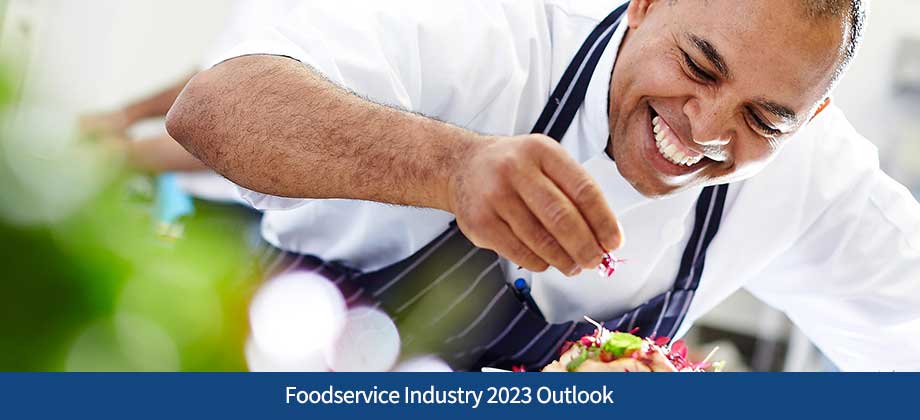Food Service Industry Outlook 2023

With the pandemic weaving in and out of our rearview mirrors, predicting industry trends–especially for industries that rely so heavily on the public–has been difficult. Bearing that in mind, it’s still important to keep an ear to the ground on these things (even if they’re guaranteed to change). Today we’re taking a peek at some of the predictions we’re seeing for 2023 in the foodservice industry. Let’s dig into the industry outlook!
If we’re being completely blunt, 2023 is set to be a complicated year for the foodservice industry. While we’re slowly progressing out of the pandemic-era quarantines and avoidance of all-things-public, there are still factors hampering a total restoration to normalcy. Hudson Riehle is senior vice president for the National Restaurant Association’s Knowledge and Research Group and made this notable remark in an article on fesmag.com: “The pandemic fundamentally altered how the restaurant industry operates overall. Many of the trends in place before COVID were amplified and accelerated by the pandemic.” This just means that “normal” isn’t what we once knew to be true. There’s now a “new normal” to contend with, and that brings uncertainty in terms of growth and revenue.
In August 2022, the International Foodservice Manufacturers Association (IFMA) unveiled its 2023 Foodservice Industry and Segment Projections. The research predicts foodservice operator spend in 2023 will see a decline of 0.1 percent compared to 2022–which is considered flat.
But what about inflation, that seemingly relentless number that continues to plague consumer spending habits? The IFMA projects the foodservice industry will be contending with a 7.7 percent inflation rate come 2023, meaning they’ll be forced to spend more in 2023–not because of customer demand, but because it simply costs more to purchase supplies.
IFMA projects the restaurant industry (meaning full-service and limited-service establishments) will decline one percentage point, due mostly to slacking demand and very likely recession. While Quick Service restaurants (QSRs) such as McDonald’s and Taco Bell have been fairly resilient over the course of the pandemic, they’re also projected to decline 0.8 percent. Fast Casual restaurants, including Panera and Chipotle, are predicted to decline by 1.3 percent.
When we look back at 2022, it’s important to note the trifecta of challenges the economy faced that had an impact on the restaurant industry: labor shortages, supply chain issues, and inflation. These 3 things aren’t going away any time soon, so there’s little evidence they won’t continue to have a direct impact in 2023. What is hopefully going to drive better performance is a brighter outlook on the consumer end of things. Right now, consumer confidence is waning thanks to gas prices, food costs, inflation, and interest rate hikes. These items will continue to have an impact on how likely consumers are to spend at restaurants come the new year. Like we said earlier, it’s complicated.
Is the foodservice industry headed in the right direction? Keep an eye on the employment statistics that come out regularly, which are a key indicator in whether or not consumer demand is on the uptick. While restaurants are continuing to add jobs, employment still sits far below pre-pandemic levels.
At ARF Financial, we’ve always got our eyes out for the latest trends in marketing, finance, and all things small business. The Financial Pantry offers the advice small business owners need when thinking about the success of their business. From industry outlooks to cost control strategies and so much more, we’re here for your business in every way. Need proof? Check out our success stories – and get the low-down on why businesses like yours bank on us!
Your privacy is important to us. ARF Financial will never sell or rent your information to any third party. Click here for more information about our privacy policy.

